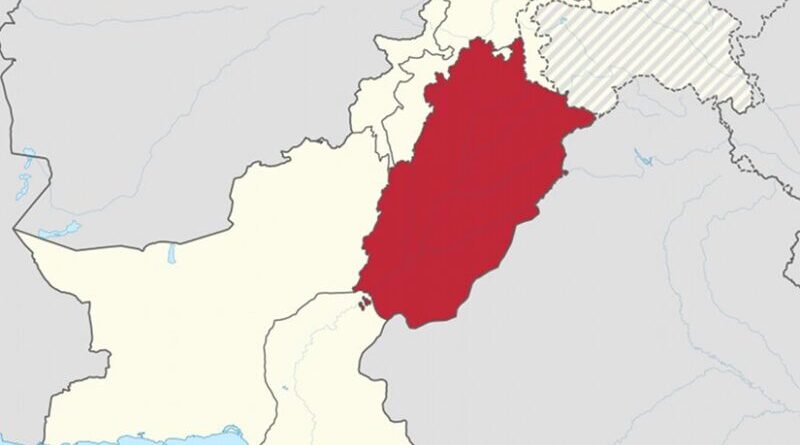Punjab Is Pakistan’s Militant Breeding Ground And Terror Sanctuary – OpEd
By Amitava Mukherjee*
India has shown praiseworthy restraint in the aftermath of the Uri attack by not dancing to the tune of jingoistic voices within the country as there are conflicting signals from across the border so far as mutual relations between various terrorist outfits operating from Pakistani soil and the government of Pakistan are concerned. The Uri attack has taken place at a time when the Pakistan army and the Nawaz Sharif administration are taking punitive measures, albeit on a selective basis, against some terrorist outfits in that country. However the most populous and economically advanced Punjab province, particularly its southern part, is now becoming a hub of terrorist activities posing a direct threat to the power base of the Pakistani elite.
In recent past 70 terrorist groups, big and small, with support networks of regional and international terror organizations, have mushroomed in Punjab. Prominent among them are the Jaish-e-Mohammed (JeM), Lashkar-e-Jhangvi(LeJ) and Lashkar-e-Taiba (LeT). Although the JeM mostly operates from the Pakistan occupied Kashmir yet it has significant presence in Punjab also. Their thriving has been made possible by the fact that the Punjab province in Pakistan is heavily dominated by two highly conservative Sunni sub-sects named the Barelvis and the Deobandis, although the province was once known for its allegiance to Sufism. These two sub-sects follow the ‘fiqh’ of Abu Hanifa. There is another influential school called Ahle-e-Hadith whose adherents are known as Wahabis in general terms.
Understanding the prevailing religious dynamics of the Punjab province is necessary for analyzing its sustained existence as a focal point of militant activities as all the Sunni sects mentioned above remain almost on a same wavelength and therefore provide a solid theoretical fulcrum for all Sunni militant groups. Punjab’s militancy is different from that in the Federally Administered Tribal Areas (FATA) in the sense that while the latter is ethnicity based the former is totally based on religion.
Today southern Punjab has become the largest recruitment area for the Punjab Taliban particularly for Jamaat-ur-Ahrar, its splinter faction. The Taliban is using local illiteracy, indebtedness and crop failure to attract young boys, mostly in the age group 8 to 15, for jihadi purposes. It is pertinent to note here that only half of the Pakistanis can read and write, every one in three Pakistani children do not attend schools and a third of all Pakistani school students drop out at class V. Girls’ enrolment in schools is among the lowest in the world, behind even Ethiopia and Yemen. It is not surprising therefore that in the Dera Ghazi Khan division of southern Punjab the Ahl-e-Hadith faction has been recruiting girls for militant purposes.
The Pakistan army is now in an unenviable position in Punjab. It took up the duty of enforcing law and order after attack on Christian minorities in a Lahore park in March last. But the army’s connection with the JeM and the LeT, particularly the latter’s front organization Jamaat-ud-Dawah(JuD), is neck deep. Therefore it has taken only some cosmetic steps by launching strikes against some petty criminal gangs like the one led by one Ghulam Rasul alias Chhotu who has his base in the ‘katcha’ area or islands in the Indus River near the border of Punjab and Sindh. Masood Azhar, the JeM chief, now lives under protective custody of the Punjab provincial government. But its cadres roam freely. The Ahl-e-Sunnat Wal Jamaat, reincarnation of the banned Sipah-e-Sahaba, has gone underground but very little arrests of their militant cadres have taken place.
Neither the army nor the civilian administration in Pakistan is in a position to take decisive steps against the militants as Pakistani society has undergone a thorough change after the Dars-e-Nizami or the degree given by the Madrasa Board was declared equal to Masters degrees given by secular universities in the 1970s and 1980s. It opened the floodgates of entry of madrasa-educated students into the army and the civil administration. It is not that none of the Pakistani leaders understood the inherent danger. Pervez Musharraf tried to modernize the madrasas and wanted to introduce general subjects in their curricula. But he failed. Shabaz Sharif, the head of the provincial Punjab administration, had once declared that he would release USD 75 million to build free model schools close to large madrasas. What came out of his promise is not known.
Nowadays Multan, Bahawalpur and Dera Ghazi Khan divisions of southern Punjab have become breeding grounds of terrorist activities. The process has been facilitated by numerical superiority of the Barelvi and Deobandi, two extremely conservative sects of Sunni Islam, in Punjab province. Together these two sects constitute nearly 76 percent of population in Punjab. The Deobandi, more rigid of these two, constitute 30.33 percent of population in Bahawalpur and 25.93 percent in Multan. Together they form more than 56 percent of population in these two divisions. It is no wonder that both Multan and Bahawalpur are now known as nurseries of terrorism in Punjab.
This sectarianism-militancy equation is noticeable in the distribution of madrasas also. Pakistan has around 35,000 madrasas of which nearly 12,000 are situated in Punjab. Of them Multan has 1895, Bahawalpur 1618 and Dera Ghazi Khan 1225. In all the three divisions the Barelvis and the Deobandis constitute overwhelming majorities. It is again noteworthy that the Deobandi madrasas enjoy a numerical superiority of 86 percent more than their ratio in the population of Punjab.
According to Pakistan government’s own estimates, 86 madrasas in Punjab are suspected to be involved in militant activities. Of these 81 are known to be Deobandi in character. Moreover, of the 13,849 religious seminaries 56 have been placed under Category-A which denotes direct involvement in militant activities.
*Amitava Mukherjee is a senior journalist and commentator. Comments and suggestions on this article can be sent on : [email protected]

